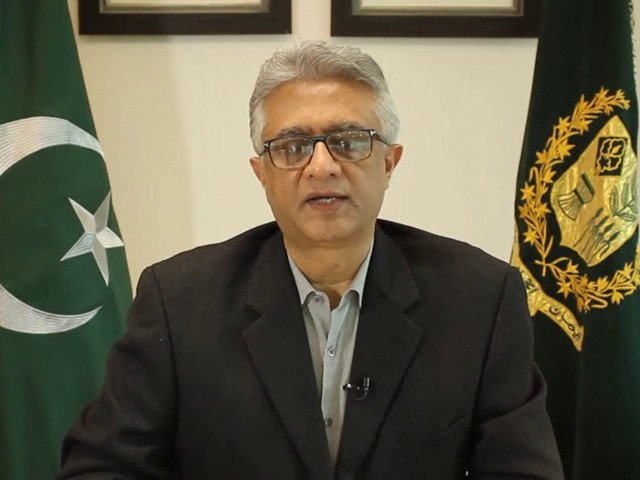ISLAMABAD: A day after major cities reported shortages of coronavirus vaccines, prompting the federal government to release 150,000 reserved doses to meet the growing demand, Minister of State for National Health Services Dr Faisal Sultan on Wednesday said the shortage is limited to busy vaccination centres and is only temporary.
In Lahore, the shortage of jabs forced the authorities to close down two vaccination centres while some others in the rest of the province may face closure, a local publication reported citing people familiar with the situation.
The publication further reported that only a day’s stock of the coronavirus vaccine is left in Punjab, impelling the authorities to close down the camp established at the Lahore Press Club and the Pakistan Kidney and Liver Institute.
Today, Dr Sultan, while addressing a press conference, said the shortage had been reported only at some busy vaccination centres. Officials, he assured, were working on ensuring the supply of additional shots and the situation is expected to improve after June 20.
“There are more than 2,000 vaccination centres in the country […] the number of visitors varies. So there may be a shortage of vaccines at some points,” he said.
The Ministry of National Health Services was in touch with the provinces and efforts were being made to overcome the shortages by diverting supplies, the minister said.
He said the government has more than two million doses of the coronavirus vaccine in its stock, but acknowledged that it is critical and complex to manage the stock properly.
About 2.2 million people have been fully vaccinated against the contagious disease, and more than 3.7 million have received at least one dose, he said, citing data.
He also clarified that it was not harmful if the second dose was delayed beyond the studied duration of four weeks.
“Approximately eight million doses have been administered. Pakistan is among the top 30 countries of the world in terms of vaccine doses administered.”
The government launched a nationwide vaccination drive, starting with older people and frontline healthcare workers, in March. The drive began with a focus on the oldest people in the community, generally over the age of 80, and worked its way down.
Battling a third peak of the virus, the Health Department began the campaign with Chinese Sinopharm and CanSino jabs.
Private hospitals in major cities are using the Russian Sputnik-V vaccine that has been imported by a local pharmaceutical company.
Initially, the government had to deal with vaccination hesitancy and a shortage of vaccine supplies and had limited shots to people aged 30 or over.
But with purchases from China and allocations from the World Health Organisation and the GAVI Vaccine Alliance, the government has now secured more than 18 million doses and is keen to get them out into the population.
The health authorities have administered 11.7 million vaccine doses with supplies from three Chinese companies — Sinopharm, Sinovac and CanSinbio — and the Oxford-AstraZeneca and Pfizer-BioNTech shots.
People are not well-informed about the importance of inoculation against the coronavirus, and many remain deeply worried about the side effects experienced by a lot of people who get the shot.
The authorities have done a poor job explaining that some symptoms are generally considered a sign that the vaccine is working. But, as is the case around the globe, the phenomenon of fake news has also contributed to widespread hesitancy, with social media and messaging services being the primary perpetrators of misinformation.
Meanwhile, the government portal confirmed 1,038 new Covid-19 cases in the last 24 hours, the National Command and Operation Centre said.
The NCOC, a department leading the national campaign against the pandemic, said that the total caseload has risen to 944,065, including 882,332 recoveries.
There are 39,905 active cases under treatment across the country, including 2,490 in critical condition.
According to the NCOC, the disease killed 46 people on Tuesday, raising the overall death toll to 21,828.
Punjab continued to be the worst-hit region with 344,379 infections and 10,567 deaths caused by the pandemic, followed by Sindh which reported 329,279 infected people and 5,273 deaths.























